Solving problems together with Postman workspaces
First-time developers or people new to Postman are sometimes stumped by workspaces. Aren’t they just API docs? Do I still use my curl/bash scripts that I have thrown together in my code repository? Is it a replacement for your homegrown API portal? However, once teams discover the power of Postman workspaces, they can’t go back to the old way of working. Read on why.
What are workspaces in Postman and how do they work?
Postman workspaces are collaborative places that help teams solve problems. Just like a work environment has different tools to help with a particular task, Postman workspaces have tools to help with tasks related to your APIs.
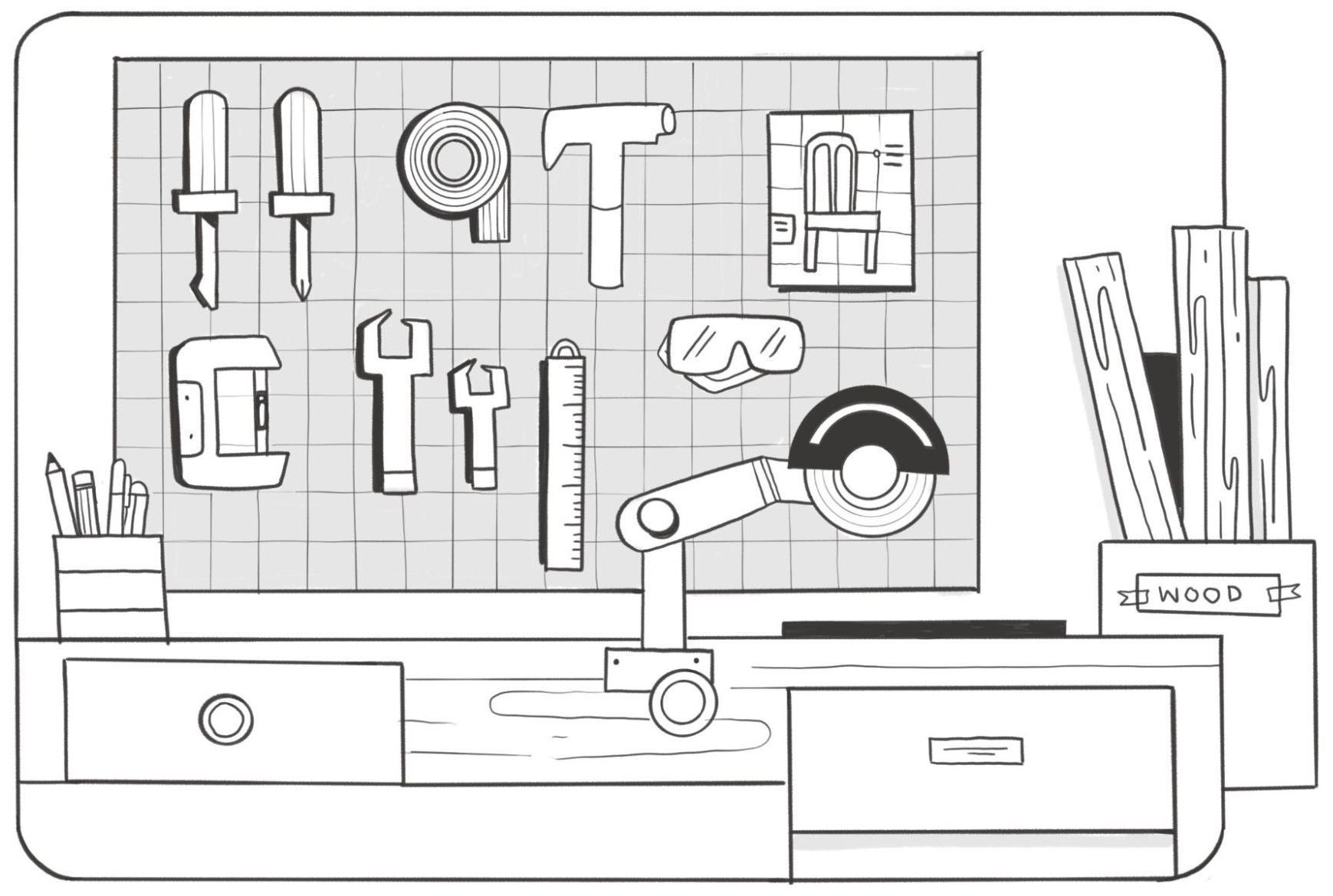
Skilled professionals in many professions have their workbenches set up just the way they want to work.
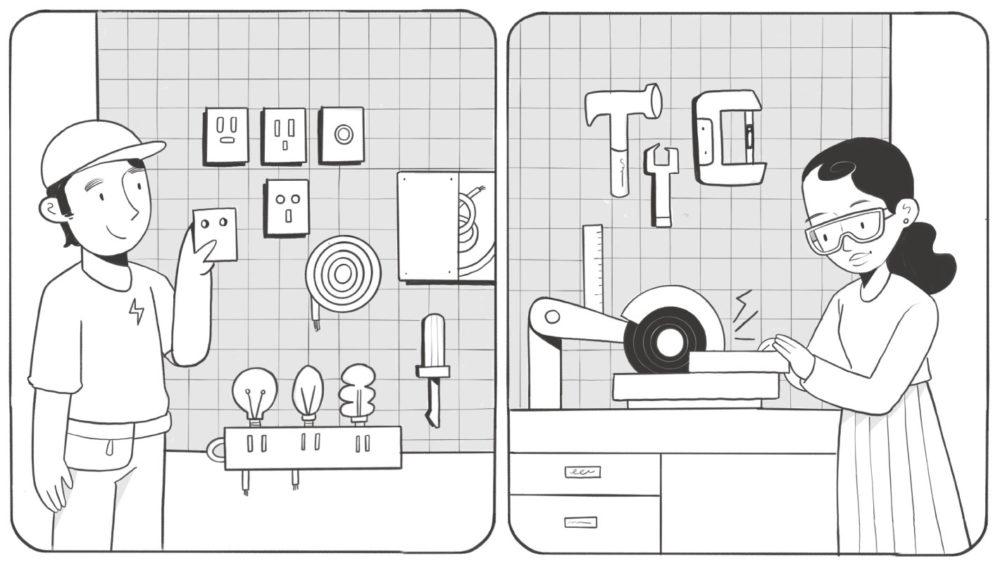
Analogous to these real-life workspaces, developers and other professionals can create workspaces in Postman with API tools. For developers, Postman provides “personal workspaces” for free. These workspaces enable anyone—a developer or a quality engineer or a product manager—to organize their API work and do the things they want to do.
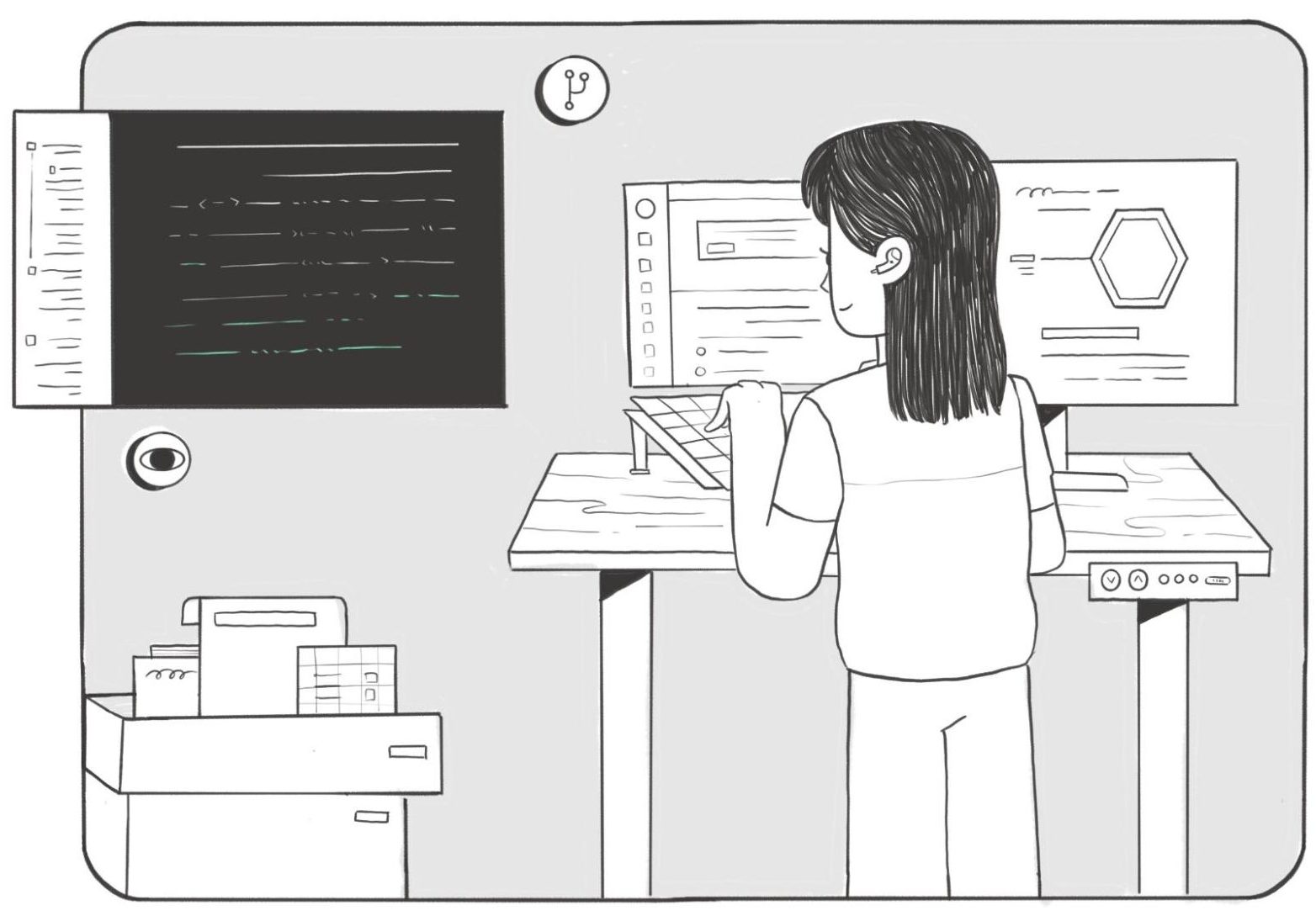
However, the key difference between a personal workspace and other workspaces (team, partner, or public) is that the group workspaces help multiple people work “together.” Inside a collaborative workspace in Postman, every person who has access to the workspace sees the same collections, the same environments, as well as other tools. This allows for shared-context building that is much faster than traditional modes of collaboration through sending documents over email, and more interactive than traditional portals or docs.
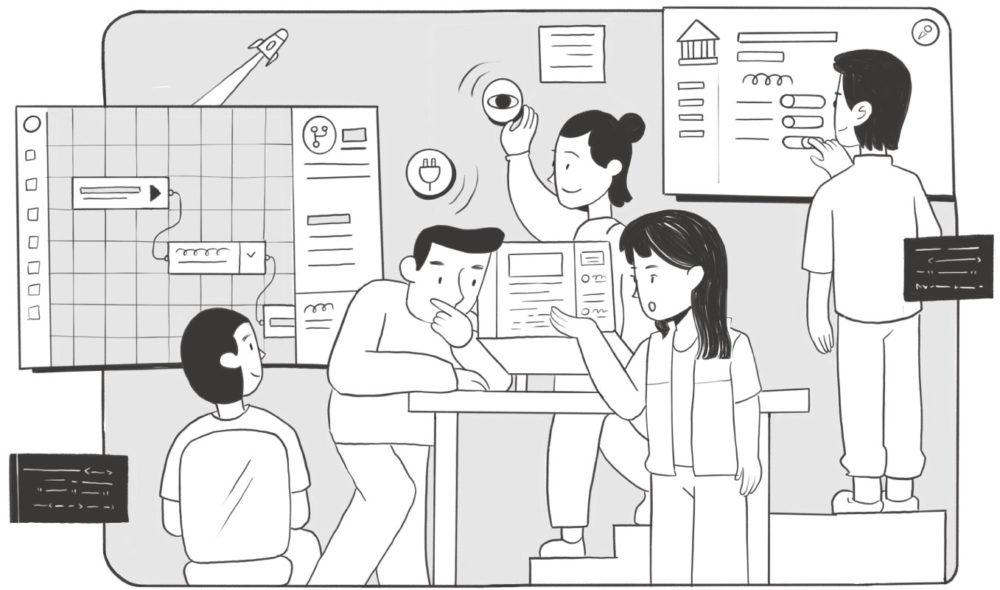
Workspaces also update in real time, so if anyone wants to make a change, it gets reflected everywhere instantly. Of course, it can be scary to overwrite someone else’s work, which is why a workspace maintains an automatic versioned history of changes that users of the workspace make so that if someone does make a mistake, it can be easily reverted. In case someone wants even more control, they can “fork” a collection or an environment to the same workspace or to a different workspace, and then work on the copy of that collection or the environment. The “forked” copy will retain a link to the original element so that you can “pull” changes if you think those changes will benefit you.

Workspaces allow for discussions to happen in the context of the element being worked upon. This means teams can have more productive conversations that help towards solving problems.
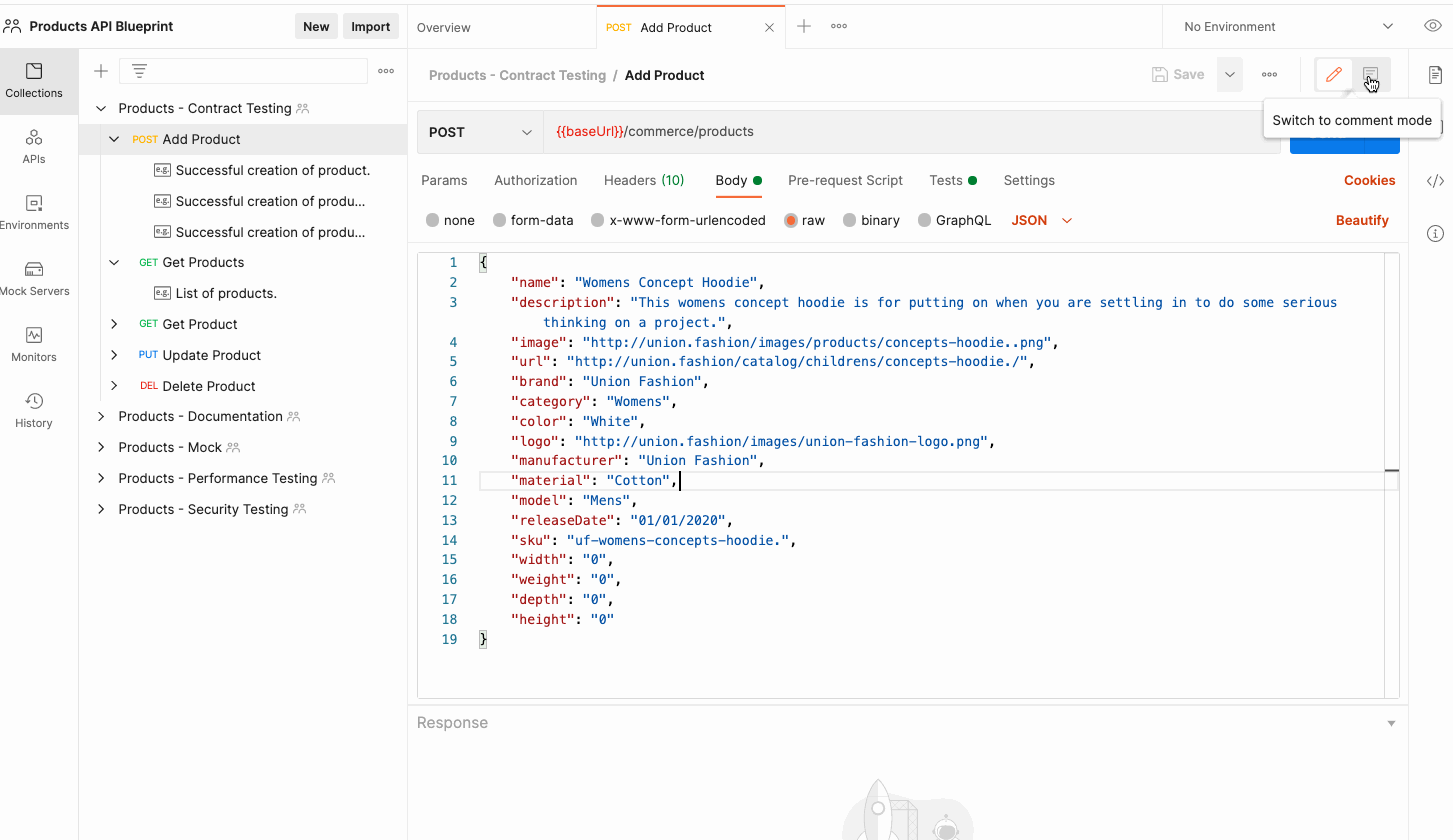
What kinds of problems can teams solve with workspaces? 10 common categories
Teams on Postman create thousands of workspaces every day. As we’ve talked to customers through the years, we’ve learned that most workspaces fall into these ten categories:
1. Engineer onboarding workspaces: onboard a developer quickly
An onboarding workspace is the first stop for a new developer inside an engineering team or an organization. These workspaces contain getting-started guides for the most common APIs that people will be using inside the company.
For Toast, workspaces have enabled faster onboarding of its internal and partner developers, helping the company save 95 minutes per developer each week and reduce duplicate work. Lightspeed has sped up developer onboarding time by 20%, and Cvent now has improved API discovery, with developers experimenting directly in Postman for faster productivity—no more reading code to figure it out!
2. Developer workspaces: move development faster
Developer workspaces are the go-to place for developers working in a team together. These workspaces are used in the pre-production stage, development stages, as well as post-production stages of building an API. They contain docs, tests, mock servers, and guides on how a team collaboratively builds an API. In a small company, one workspace can contain all the APIs that the team produces, but as engineering teams grow in size, workspaces start to be segmented on an ownership level of these APIs. For instance, Postman’s engineering team is organized into squads, and each squad maintains its own workspace. Read more about Postman squads in this blog post by Postman Co-founder and CTO Ankit Sobti.
As an example, Extend has used Postman for greater cross-team collaboration and heightened process automation, speeding up testing by 60 minutes per day. For Werner Enterprises, Postman workspaces have meant teams are three times faster, benefiting from version control, consistency during collaboration, and fewer errors.
3. API testing workspaces: discover bugs and fix issues
Postman provides powerful tools for API testing—both manual and automated testing. Engineers use API testing workspaces to ensure that APIs being built perform up to specifications. APIs inside these workspaces can be imported by testers or even better, brought in from “developer workspaces” that producers of the API are working on. Tests that are run and validated inside these workspaces can be integrated with an engineering team’s CI process using Postman’s command-line tools. For an even deeper integration, Postman Collections can be integrated with source control systems with a two-way mapping between a workspace and a source code repository.
Paylocity has eliminated friction and saved time with Postman’s test automation and turnaround time—with many of its teams now automating a wide range of QA use cases. Goibibo’s use of Postman workspaces has led to a 10% improvement in team efficiency because of automated testing, and they’ve been able to centralize their test cases across various microservices.
4. Infrastructure workspaces: set up infrastructure faster
IT teams often have to provision infrastructure, troubleshoot issues, set up networks, and do many other day-to-day tasks. With infrastructure becoming programmable, IT teams can set up manual or automated workflows inside workspaces so that a company becomes more productive. Infrastructure workspaces act as a hub for these tasks.
A fantastic example of these are workspaces created by Nick Russo for Cisco’s APIs, like this one. In the case of Monetary, Postman has automated monitoring and proven to be an out-of-the-box solution for maintaining PCI compliance.
5. Security workspaces: build more secure APIs
Postman’s Interceptor and proxy tools allow security engineers to inspect client apps running in production. Security engineers can also run penetration tests on their own to detect vulnerabilities and share issues among themselves. Having a security workspace can also help developers have access to updated knowledge about the best security practices inside the company.
Postman’s own security team relies on our Operational Security Workspace to monitor various operational security and compliance-related items—monitoring for TLS versions on our sites, expiry dates for certificates and domains, and auditing our AWS IAM configurations. Our Application Security Workspace contains various collections and monitors that we use to validate the security of our applications themselves. For example, we perform checks for unvalidated/open redirects, privilege escalation, and CORS configurations, and we audit the Postman app content-security policies (CSP).
6. Engineering style guide workspaces: establish API design consistency
Designing APIs at scale requires consistency and standardization. A style guide workspace contains examples of a reference API, common patterns of dos and don’ts that a high-performing engineering team would follow. The biggest advantage of having your engineering style guide as a workspace instead of a static documentation portal is that inside a workspace, a developer can actually interact with an API, try out different things, and then use the style guide as a jumping-off point to a new API.
Check out MTNA’s Docu-Mentor workspace for easy, standardized documentation generation. And then there’s the IATA workspace that shows how the IATA standard can be easily managed with a public workspace, or the OpenAPI Operations – 2021 workspace that helps you analyze and benchmark your OpenAPI specifications.
7. Incident response workspaces: resolve issues faster
Sometimes things don’t go according to plan in production. Debugging and troubleshooting an API in production is a common pattern. Postman workspaces can act as a collaborative hub for troubleshooting API calls that DevOps or IT engineers can use along with developers. These workspaces can help get to the root cause faster and help bring the API back up. At Postman, our engineers use a Collaboration Workspace and Identity and Access Management Workspace to quickly collaborate on, check, and test our APIs during the time of an incident.
8. Support workspaces: respond to tickets faster
For external-facing APIs, we see support teams being challenged with high ticket-resolution times. By setting up a collaborative workspace for support reps, companies can resolve these issues faster and also maintain a log of common steps that they need to follow. We also see developers sharing collections with support teams instead of code repositories, and this can dramatically accelerate resolving an issue with an API.
For members of the customer support team at Box, as an example, Postman has been used as an educational tool to help customers (and internal coworkers) learn about the Box API; questions about the Box API can be answered in minutes. At Kloudless, a customer success engineer built a Postman Collection to help users and reduce the need for customer troubleshooting.
9. API demo workspaces: communicate benefits and close customers faster
Postman workspaces can act as demo environments for your external-facing API and show the business viability of the API. These workspaces are used by solution engineers or professional services to demonstrate an API or an API integration. Engineers can prototype integrations ahead of time using Postman mock servers and accelerate the time it takes to integrate.
Envestnet | Yodlee uses Postman to demo technical products and get (potential) clients up and running immediately, while Momentive has used Postman during sales support calls and for teaching non-engineers about APIs.
10. Public API/community workspaces: reach more developers and onboard them faster
Finally, a public API workspace is a collaborative workspace that companies can set up to interact with their community. Public API workspaces can contain docs, how-to guides, and reference material to accelerate the time to first call (TTFC) for a developer. Postman has hundreds of thousands of workspaces on the platform now, including the likes of Salesforce, Stripe, Notion, PayPal, and hundreds of excellent APIs that are demonstrating what great onboarding looks like.
In the case of Twitter, which now uses Postman to centralize API onboarding, education, and exploration, its public workspaces have led to a faster “time to Hello, World!” for about 50% of new users. PayPal turned to its public workspace as an interface for developers of all skillsets to interact with its API immediately.
Power your API journey with Postman workspaces
Teams of any size can unlock huge productivity benefits by using workspaces. Hopefully, this list gives you a good starting point to think about your own journey.
If you are a senior leader in an organization, setting up collaborative workspaces is an essential step in unlocking organization-wide productivity and the first step towards deploying a comprehensive company-wide API platform. In the absence of workspaces, teams often resort to homegrown tools cobbled together with other solutions—this approach not only leads to tool sprawl and inconsistency, but it also leads to organizational knowledge spread all over the place.
Postman workspaces allow for a level of flexibility that can adapt to any company’s needs—whether you have ten developers or 10,000. Workspaces are available on all Postman plans, but for more comprehensive controls and capabilities, you might want to check out our Enterprise plan. You can start trying out team workspaces as part of our free plan here.
For a fun take on how workspaces help developers work better together, check out our newest video campaign! And if you have a fun idea for a workspace, let us know in the comments below!

please I can’t attach a picture in x-www-form-urlencoded
Workspace is a supernatural term and in a realm spiritual world being used! We serve the supernatural all powerful boss of everything is possible if you believe. Now we can see that postman is supernatural API platforms to develop our global & glorious bankroll to be used to the expansion of thy lovely kingdom and restore the wonderful earthly and human divine values that this world has lost! Thanks a lot! and be more blessed!
Super
Solving Problems Together with Postman Workspaces is the right step to take in this Rest API world.
We have been trying to fix the rest API errors: trophy developers. com / fix-wordpress-rest-api-errors. we found out that Postman is the right solution
Need check for URLs but I am getting 401 unauthorized through postman but manually its working
Hi, Please contact our support team at https://www.postman.com/support and they’ll be glad to help you.
Cant able to login with my existing postman account inside AWS.
Outside Aws it is working fine
Please contact our support team at http://www.postman.com/support and they’ll be able to help you.